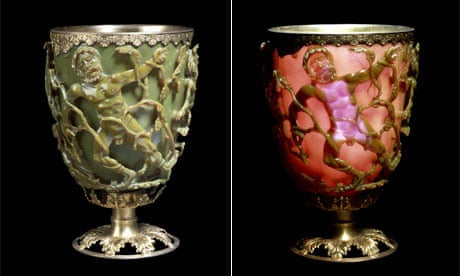Nanotechnology + Art Blog
The topic for this week’s blog is nanotechnology and art. Very similar to the previous week’s topics, these two subjects compare in many different ways, such helping with medicine, understanding the laws of physics on a smaller level, and learning of how patterns and structures found in the environment can inspire many artists to continue with the research of nanotechnology. Professor James K. Gimzewski spoke in all of the lecture videos for this week’s topic and I found many of the things he said very enlightening. For instance, he discussed how the idea and research of nanotechnology was founded mainly by a physicist named Richard Feynman. Richard Feynman's understanding of nanotechnology (even though it was not called this when he discovered it) was a very big turning point for how different, already existing aspects of life can be adjusted to better suit different forms of life in our world.
Also introduced by Professor Gimzewski was Dexler’s Vision, which was the engineering with atoms and molecules. Dexler had a vision of having a Ford Assembly type of system for molecules to combine for nanotechnology. I feel this is important in knowing because it was the foundation for how the whole concept of how nanotechnology could work for future scientists and artists.
(Photo: Richard Feynman)
(Photo: Assembly line for combining molecules)
Professor Gimzewski also brings up the topic of diamonds and how they are very admirable for jewelry and different forms of art, but nanoparticles play a major impact in the look of these diamonds. The way nanoparticles structure themselves into specific patterns are influenced greatly by nanoparticles. With the help of nanotechnology, these patterns can be copied with molecules to influence different molecule combinations that can help with scientific research of minerals, rocks, and essentially help artists with their artwork. The patterns of these hard objects that we find on earth are naturally made and help our environment thrive. By referring to these objects as sources for creating other different types of objects with molecules, the way humans contribute to society and the environment can advance in a good direction.
(Photo: Diamond used as jewelry also has a very interesting molecular pattern that's useful for nanotechnology)
Along with how nanoparticles contribute to artwork, is the example of Roman pottery Professor Gimzewski discusses within the lecture. Romans were some of the very first individuals to use nanoparticles for the help of their art pieces. For instance, Romans made a very creative cup that glowed bright red when any sort of light was shown in the middle of the cup. The glowing red color comes from the help of nanoparticles that were used to help craft the cup. The glowing color by nanoparticles as evolved into being used by scientists who research alternative ways for detecting health issues within individuals such as cancer cells.
(Photo: Roman cup that glows of bright red from the inside due to nanoparticles)
A topic discussed that was very important was the topic of nano-medicine. I personally find this topic of nanotechnology to be extremely crucial and important in learning the different effects of nanotechnology because I am particularly interested in the medical field as my career in the future. I feel the use of nano-medicine take healthcare to many different heights that can help society greatly. Naonmedicine is being more recently introduced into the help of common treatments such as chemotherapy. Nanomedicine can prevent toxins from harshly abusing a patients body while undergoing intense treatment to help an illness.
Works Cited
"Art in the Age of Nanotechnology." Art.Base. N.p., n.d. Web. 29 May 2017. <https://art.base.co/event/2104-art-in-the-age-of-nanotechnology>.
Gimzewski, Jim, and Victoria Vesna. "The Nanomeme Syndrome: Blurring of Fact & Fiction in the Construction of a New Science." The Nanomeme Syndrome: Blurring of Fact & Fiction in the Construction of a New Science. N.p., n.d. Web. 28 May 2017. <http://vv.arts.ucla.edu/publications/publications/02-03/JV_nano/JV_nano_artF5VG.htm>.
Uconlineprogram. "Nanotech Jim Pt1." YouTube. YouTube, 21 May 2012. Web. 28 May 2017. <https://www.youtube.com/watch?v=q7jM6-iqzzE>.
Uconlineprogram. "Nanotech Jim Pt2." YouTube. YouTube, 21 May 2012. Web. 28 May 2017. <https://www.youtube.com/watch?v=HEp6t0v-v9c>.
Uconlineprogram. "Nanotech Jim Pt3." YouTube. YouTube, 21 May 2012. Web. 29 May 2017. <https://www.youtube.com/watch?v=X0HCNiU_108>.





Comments
Post a Comment